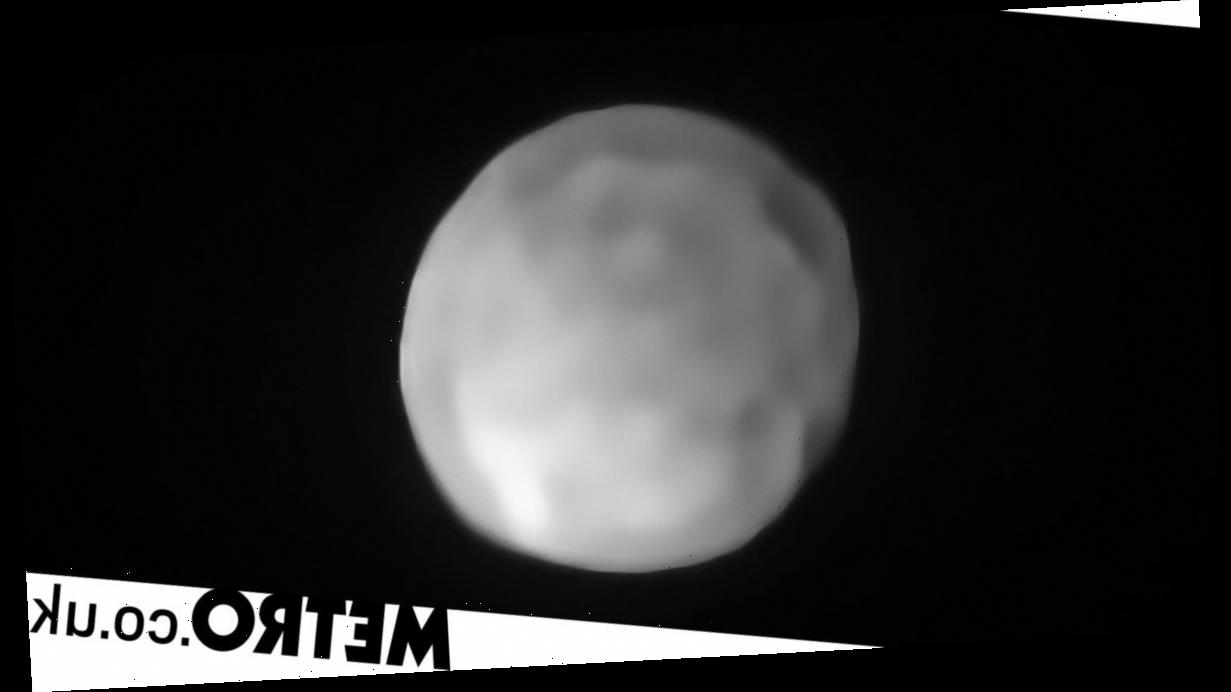A huge rock, long thought to be just another asteroid, may actually be a dwarf planet, astronomers have said.
The rock is known as Hygiea and experts are currently debating whether or not to reclassify it.
It sits in the asteroid belt between Mars and Jupiter and would become the smallest dwarf planet in the solar system at just over 280 miles in diameter.
Astronomers say this celestial body could potentially take the crown from the 590-mile wide Ceres – also located in the rocky belt.
The findings, published in the journal Nature Astronomy, come after an international team of astronomers observed Hygiea using the European Southern Observatory’s Very Large Telescope (VLT).
A dwarf planet, according to the International Astronomical Union (IAU), is a celestial object orbiting a star that is massive enough to be rounded by its own gravity but does not have the gravitational dominance to clear the area around its orbit by consuming or slinging away smaller objects in its path. The most famous example is Pluto, which was downgraded to a dwarf planet in 2006 after the IAU changed the requirements that defined a planet.
Along with Ceres and Pluto, there are three other known dwarf planets in the solar system – Haumea, Makemake and Eris.
Ceres and Hygiea hail from the asteroid belt, sharing the vast space with 7,000 other members, including a large asteroid called Vesta. It is believed that our solar system was formed around 4.5 billion years ago, when a dense cloud of interstellar gas and dust collapsed and caused objects to smash against each other to form larger objects.
The gravity of newly-formed Jupiter is thought to have brought an end to the formation of planets in the asteroid belt region, instead causing small bodies to collide with one another and shatter them into smaller pieces.
To investigate how Hygiea got its spherical shape, the researchers peered through the VLT and analysed the data gathered using the telescope’s SPHERE instrument. While high-resolution images showed Hygiea was rounded by its own gravity, the astronomers say they were ‘surprised’ it lacked large impact craters, ie, evidence of a major collision.
The team said they could only identify two small craters, neither of which ‘could have been caused by the impact that originated the Hygiea family of asteroids’.
To investigate further, the researchers used computer simulations, which showed a major head-on collision between two large bodies – possibly one of the largest impacts in the history of the asteroid belt thought to have occurred about two billion years ago.
Once the left-over pieces reassembled, they gave Hygiea its round shape and thousands of companion asteroids, the team said.
Study author Pierre Vernazza, from the Laboratoire d’Astrophysique de Marseille in France, said: ‘Thanks to these images, Hygiea may be reclassified as a dwarf planet, so far the smallest in the solar system.’
Source: Read Full Article

